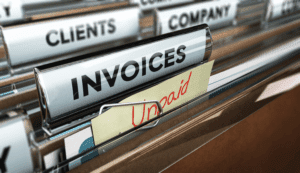Content

To record bond interest payment.This entry records $1,000 interest expense on the $100,000 of bonds that were outstanding for one month. Valley collected $5,000 from the bondholders on May 31 as accrued interest and is now returning it to them. For the years in which you own the bond for all 12 months, you simply take amortization of 12 times the monthly amount.
Which statements are true about amortization of bond premiums?
Which statements are TRUE about amortization of bond premiums? Amortization of bond premiums reduces reported interest income each year, but it does not represent a cash loss, since the issuer pays the stated interest amount.
The primary advantage of premium bond amortization is that it is a tax deduction in the current tax year. In that case, the premium paid on the bond can be amortized, or in other words, a part of the premium can be utilized towards reducing the amount of taxable income. Also, it leads to reducing the cost basis of the taxable bond for premium amortized in each period. Assume instead that Lighting Process, Inc. issued bonds with a coupon rate of 9% when the market rate was 10%. The bond purchaser would be willing to pay only $9,377 because Lighting Process, Inc. will pay $450 in interest every six months ($10,000 × 9% × 6/ 12), which is lower than the market rate of interest of $500 every six months. The total cash paid to investors over the life of the bonds is $19,000, $10,000 of principal at maturity and $9,000 ($450 × 20 periods) in interest throughout the life of the bonds. If you choose to amortize the bond premium, then you can offset your interest income from the bond by the annual amount of amortized bond premium.
I write a separate line with negative entries forBond Amortization and typically also include the name of the 1099 that I am matching up with,. Whether you are starting your first company or you are a dedicated entrepreneur diving into a new venture, Bizfluent is here to equip you with the tactics, tools and information to establish and run your ventures. By striking “, or by a foreign personal holding company, as defined in section 552” after “section 584” and by striking “, or foreign personal holding company” after “common trust fund”. The difference of $7,580 between the face value of bond of $100,000 and the proceeds of $92,420 represents the discount on bond. Founded in 1993 by brothers Tom and David Gardner, The Motley Fool helps millions of people attain financial freedom through our website, podcasts, books, newspaper column, radio show, and premium investing services.
Bond Amortization Methods
Hereby elects, pursuant to IRC Sec. 171, to amortize bond premium during the taxable year and for all subsequent taxable years. The first taxable year to which this election applies is the taxpayer’s calendar year ending .
As the discount is amortized, the discount on bonds payable account’s balance decreases and the carrying value of the bond increases. The amount of discount amortized for the last payment is equal to the balance in the discount on bonds payable account.
Our systems have detected unusual traffic activity from your network. Please complete this reCAPTCHA to demonstrate that it’s you making the requests and not a robot. If you are having trouble seeing or completing this challenge, this page may help. If you continue to experience issues, you can contact JSTOR support.
- First, calculate the bond premium by subtracting the face value of the bond from what you paid for it.
- In most cases, it is the investor’s decision to convert the bonds to stock, although certain types of convertible bonds allow the issuing company to determine if and when bonds are converted.
- Intrinsically, a bond purchased at a premium has a negative accrual; in other words, the basis amortizes.
- This procedure ensures that after the discount or premium is fully amortized, the investment account will reflect the bond’s maturity value.
FASB made targeted changes Thursday to the rules governing accounting for amortization of premiums for purchased callable debt securities. Bonds are secured when specific company assets are pledged to serve as collateral for the bondholders.
Since bond buyers will receive more at maturity than they paid at purchase, they treat bond discounts as gains. Individuals amortize discounts using either the straight-line method or constant yield method. They must amortize original issue discounts but can choose not to amortize market discounts and instead recognize these as an ordinary gain at bond maturity or sale. Corporations amortize bond discounts using the straight-line method or the effective yield method.
Step 4
For example, assume you amortize a bond’s discount by $100 annually and pay $500 in annual interest. These unsecured bonds require the bondholders to rely on the good name and financial stability of the issuing company for repayment of principal and interest amounts. A subordinated debenture bond means the bond is repaid after other unsecured debt, as noted in the bond agreement. The amortized bond premium is offset against the interest income of the bond.
- Regardless of when the bonds are physically issued, interest starts to accrue from the most recent interest date.
- For all other entities, the amendments are effective for fiscal years beginning after Dec. 15, 2019, and interim periods within fiscal years beginning after Dec. 15, 2020.
- This is not the case; however, you must follow certain guidelines when it comes to reporting negative amounts on your balance sheet if you choose to take them into account in determining net income.
- Based on the remaining payment schedule of the bond and A’s basis in the bond, A’s yield is 8.07 percent, compounded annually.
- Full BioCierra Murry is an expert in banking, credit cards, investing, loans, mortgages, and real estate.
Subtract the annual amortization of the premium from the amount of unamortized premium on your balance sheet to calculate your unamortized premium remaining. Continuing with the example, assume you have yet to amortize $2,000 of the bond’s premium. Subtract $200 from $2,000 to get $1,800 in unamortized premium remaining. Subtract the annual amortization of a bond’s premium to the annual interest you paid to bondholders to calculate total annual interest expense.
How to Amortize a Bond Premium
All such information is provided solely for convenience purposes only and all users thereof should be guided accordingly. In this entry, Cash is debited for $600, which is the full 6 months’ interest payment ($12,000 x 0.05). “ The amendments made by this paragraph shall apply to obligations issued after September 27, 1985. “ with reference to the amount payable on maturity , in the case amortizing bond premium of any bond described in subsection which is acquired after December 31, 1957, and”. For purposes of the preceding sentence, the term “taxable bond” means any bond the interest of which is not excludable from gross income. The brokerage house you used to purchase the bond should be able to provide you with all the information you need about how often, and when, interest payments occur.
- The coupon rate of interest is 10% and has a market rate of interest at 8%.
- These tools are designed to help you understand the official document better and aid in comparing the online edition to the print edition.
- On May 1, 1999, C purchases for $130,000 a taxable bond maturing on May 1, 2006, with a stated principal amount of $100,000, payable at maturity.
- Any amount you cannot deduct because of this limit can be carried forward to the next accrual period.
- The journal entries made by Lighting Process, Inc. to record its issuance at par of $10,000 ten‐year bonds with a coupon rate of 10% and the semiannual interest payments made on June 30 and December 31 are as shown.
Although the accrual period ends on August 1, 1999, the qualified stated interest of $5,000 is not taken into income until February 1, 2000, the date it is received. Likewise, the bond premium of $645.29 is not taken into account until February 1, 2000. The adjusted acquisition price of the bond on August 1, 1999, is $109,354.71 (the adjusted acquisition price at the beginning of the period ($110,000) less the bond premium allocable to the period ($645.29)). These final regulations adopt the rule in the temporary and proposed regulations. You choose to amortize the premium on taxable bonds by reporting the offsetting amortized bond premium on your income tax return for the first tax year for which you want the choice to apply. You must attach a statement to your return showing how you figured your offset amount.
How to Calculate an Amortized Bond Premium
Helstrom attended Southern Illinois University at Carbondale and has her Bachelor of Science in accounting. The articles and research support materials available on this site are educational and are not intended to be investment or tax advice.
How do you amortize a bond premium straight line?
In the straight-line method of amortization of bond discount or premium, bond discount or premium is charged equally in each period of the bond's life. When the coupon rate on a bond is lower than the market interest rate, the bond is issued at a discount to par value.
Interest is typically paid twice per year, at the end of June and at the end of December. However, check with the specifics about your bond.If there’s https://www.bookstime.com/ five years left until the bond matures, and you bought the bond at the beginning of the year, then there are most likely 10 interest payments left .
Problems with New IRS Bond Premium Amortization Rules
This takes into account the basis of the bond’s yield to maturity, determined by using the bond’s basis and compounding at the close of each accrual period. Note that your broker’s computer system just might do this for you automatically. In order to calculate the premium amortization, you must determine the yield to maturity of a bond. The yield to maturity is the discount rate that equates the present value of all coupons and principal payments to be made on the bond to its initial purchase price. Those who invest in taxable premium bonds typically benefit from amortizing the premium, because the amount amortized can be used to offset the interest income from the bond.
Create a journal entry that decreases the account “premium on bonds payable” with a debit when interest is paid semi-annually. Decrease cash for the interest paid to the lender with a credit, and debit the account “interest expense” for the difference.

Alternatively, if the coupon rate is higher than the market interest rate, the bond is issued at a premium to its par value. The issue price and face value are equal only when market interest rate and the coupon rate are equal. Amortizable Bond Premium refers to the cost of premium paid above the face value of a bond. The face value of a bond is also called “par value”, it is the original cost of a stock or the amount paid to the holder of a bond.
The bond premium is a part of a bond’s cost basis and is amortized over the remaining life of the bond. The premium is a gain for the bond issuer and loss to the buyer.

To get the current interest expense, you’ll use the yield at the time you purchased the bond and the book value. For example, if you purchased a bond for $104,100 at an 8% yield, then the interest expense is $8,328 ($104,100 x 8%). Remember, though, that interest is paid twice per year so you need to divide that number by two, giving you $4,164. Stakeholders said this accounting results in the recognition of too much interest income before a borrower calls the debt security, followed by the recognition of a loss on the call date. See Table 3 for interest expense and carrying value calculations over the life of the bond using the straight‐line method of amortization . The deductible portion of investment interest expense is calculated on Form 4952.
This is because we paid an amount lower than the face value of the bond at issue date but will get the full face value at maturity. According to the effective interest rate method, the adjustment reflects the reality better. In other words, it reflects what the change in the bond price would be if we assumed that the market discount rate doesn’t change. The Level 1 CFA Exam is approaching, so we have to keep up the pace. Today, let’s discuss the methods of amortizing bond discount or premium. When you first purchase the bond, the book value is the same as the amount you paid for it. For example, if you purchased a bond for $104,100, then the book value is $104,100.The book value will decrease every time you receive an interest payment.
The acquisition of a zero coupon debt instrument at a premium and with a negative yield was not contemplated when the prior regulations were revised in 1997 . Using the straight-line method of amortization, the seller evenly spreads the “premium” on its books over the life of the bond. This amortization reduces or offsets the interest expense incurred from the bond on the seller’s books. When bonds are sold at a discount or a premium, the interest rate is adjusted from the face rate to an effective rate that is close to the market rate when the bonds were issued. Therefore, bond discounts or premiums have the effect of increasing or decreasing the interest expense on the bonds over their life. Under these conditions,it is necessary to amortize the discount or premium over the life of the bonds by using either the straight-line method or the effective interest method.
CPA Exam Cost & Fees
Amortization of the discount may be done using the straight‐line or the effective interest method. Currently, generally accepted accounting principles require use of the effective interest method of amortization unless the results under the two methods are not significantly different. If the amounts of interest expense are similar under the two methods, the straight‐line method may be used. Sellers can either accumulate the interest income in a suspense account and then close it at maturity, or they can use the proportionate method, which is to debit cash for the full interest expense on each coupon date. Paying straight-line amortization of bond discount or premium over the life of the bond is very complicated and not recommended. Calculating bond premium amortization using the straight-line method couldn’t be simpler. First, calculate the bond premium by subtracting the face value of the bond from what you paid for it.
This spreads out the gain or loss over the remaining life of the bond instead of recognizing the gain or loss in the year of the bond’s redemption. The constant-yield method will give you a smaller amortization amount than the straight-line method in early years, with the constant-yield amortization figure growing in later years. That puts it at a overall disadvantage to the straight-line method from the taxpayer’s standpoint, which might be one reason why tax laws were changed to have newer bonds use the less favorable method. When understanding the tax effect of purchasing a bond at a premium, remember that the premium becomes a part of the investor’s cost basis for the bond. Calculate the total amount of interest you’ll receive if you hold the bond until maturity. You can do that by multiplying the interest payments times the number of payments left.
In the case of a bond , the amount of the amortizable bond premium for the taxable year shall be allowed as a deduction. The interest income on a debt-investment purchased at a discount must also be similarly higher than the interest income received.
Your Account
An individual bond buyer amortizes bond premium by applying the constant yield method. You subtract the annual amortized amount from interest income and deduct any excess amortized premium as an itemized expense. Corporations normally use straight-line amortization or the effective interest method to amortize bond premium. Bond issuers debit the amortized amount to the premium on bonds payable account and credit the interest income account monthly.
